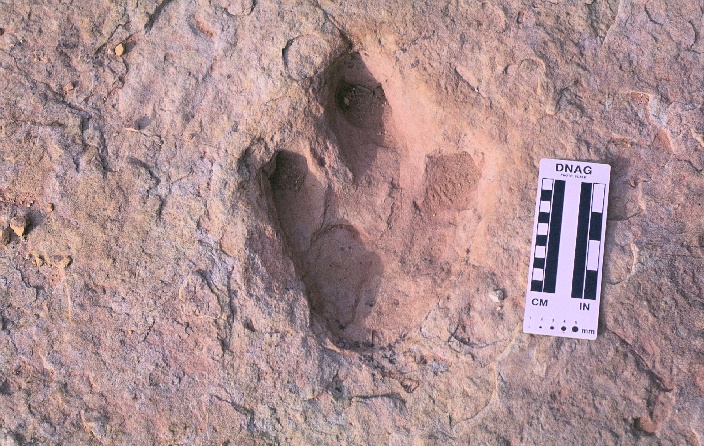
Megatracksite
Go To MORE
PHOTOS FOR the Megatracksite?
Overview of this Site
At this site
participants are asked to observe therapod tracks and answer a series of
questions about the tracks. First, how many organisms made the tracks? How do
you know?
Second,
did the trackmakers walk here during deposition of the Moab Tongue of the
Entrada, or during deposition of the Summerville? Why?
Third,
think about what environments (modern) preserve tracks, and which environments
(modern) preserve bones. Bones are common in the Jurassic Morrison Formation
but tracks are relatively rare. Here, at the Jurassic Summerville/Entrada
contact tracks are common and bones are rare. Why might this be?
Empirical
formulas are used to estimate the speed of trackmakers. The formula we will use
(Alexander, R. McNeill, 1976) is based on observation of modern large mammals.
The formula:
u
= 0.25((g)**(0.5))*((L)**(1.67))*((H)**(-1.17))
relates
stride length (L, in m), hip height (H, in m), and gravity (g, in m/(s**2)) to
speed (u, in m/s). Hip height is estimated as four times the foot length. Use
the equation to calculate the speed of at least one of the trackmakers.
If
the track length and the stride length were the same as they are here, but
these tracks were found on the moon (different gravity) what would the
organisms' speed have been (assume the equation is still valid)?
In
the wash where we park the cars measure your own track length and stride
length. Calculate your hip heig ht as four times your foot length. Is the
calculation close? Now calculate your walking speed based on Alexander's
equation and your true hip height. Does the calculated result seem reasonable?
Finally,
summarize the results of the day's activities in a one or two page report that
discusses the tracks, their substrate, and the results of all your
calculations.
![]()
Return to Geology of Utah's National Parks Home Page
Return to Introduction to Photos Page
![]()